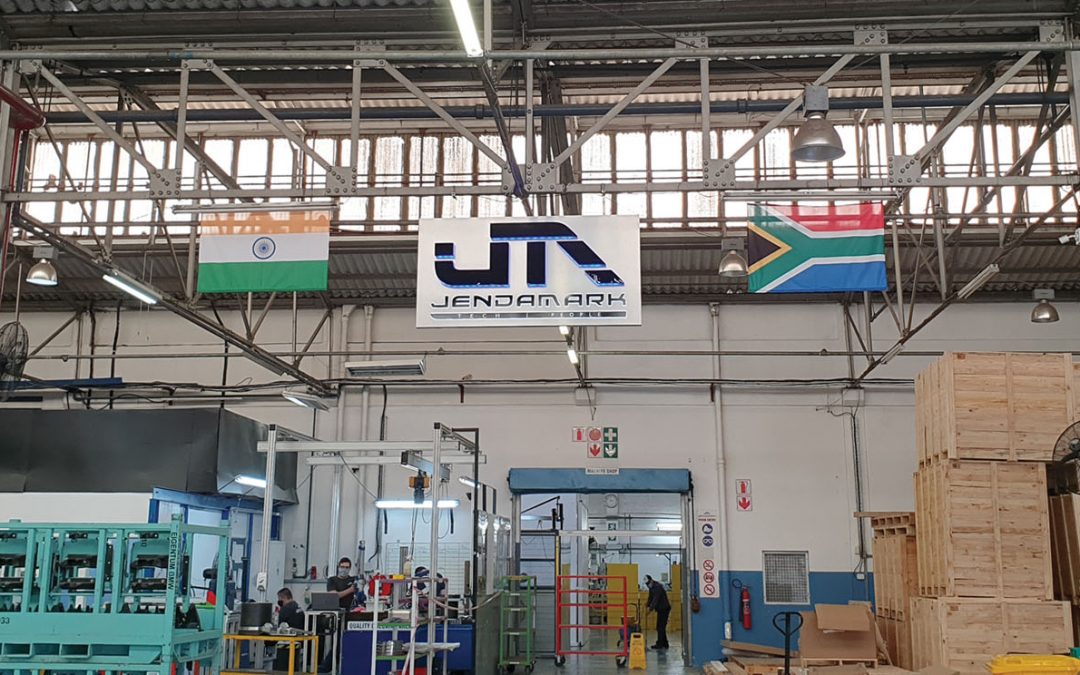
by NewsAdmin | Mar 1, 2021 | Industry 4.0, Jendamark News
Pandemic-related lockdowns and global supply chain interruptions have highlighted the need to localise – and digitalise – vehicle manufacturing processes.
According to a report by Deloitte about the impact of Covid-19 on the international automotive sector, 80% of global vehicle production involves some form of “Made in China” parts.
For developing countries like India and South Africa, deepening local supply chains could lessen this reliance, strengthen the economy and create jobs for a growing population. But the practicalities of sourcing skilled labour and ensuring that locally made products are competitive in terms of cost and quality have left suppliers struggling to implement the right solutions.
As major vehicle-producing countries in their respective regions, both India and South Africa are ripe for a smart manufacturing revolution to address these issues. Post-Covid-19, the global smart manufacturing market is projected to grow from US$181.3 billion in 2020 to US$220.4 billion by 2025.
SA MASTERPLAN
In South Africa, vehicle and component production accounts for almost a third of the country’s manufacturing output. While the Original Equipment Manufacturers and their Tier 1 component suppliers are well established, Tier 2 and 3 suppliers are underdeveloped and contribute just 20% to the automotive value chain.
The government’s new South African Automotive Masterplan, which aims to make the sector globally competitive by 2035, outlines ambitious targets such doubling direct employment and vehicle production, and increasing average local content in vehicles from 39% to 60%.
“Covid-19 will certainly cause job and production losses, and delay implementation of the plan, but the intention is clear,” says Jendamark SA’s sales and digital services director, Yanesh Naidoo.
“The plan creates serious opportunities for localisation of our supply chain, especially for black entrepreneurs, but we need to adopt new technologies and skills fast.
“The Odin Manufacturing solutions that we’ve developed are uniquely geared to the operating challenges within a developing economy. They are designed to assist deep localisation and don’t need high-end IT infrastructure. Most importantly, they don’t cause job losses,” explains Naidoo.
He points to solutions like the Odin Workstation operator guidance system and Odin Maintenance apps, which were designed to support human operators and technicians.
“Technology can equip even semi-skilled operators to perform complex tasks with minimum training, and ensure that production processes become faster, more accurate and efficient.”
SELF-RELIANT INDIA
Similarly, the Government of India’s stimulus package and the Atmanirbhar Bharat (Self-Reliant India) movement have provided the impetus for manufacturers to boost local production.
“The Indian automotive industry was at a crucial juncture when the pandemic hit,” says Jendamark India director and CEO Himanshu Jadhav.
“India had committed itself to move from BS4 to BS6 emission norms from 1 April – a seemingly impossible task was on the brink of reality when the national lockdown was announced.
“With the supply chain cut off, and the border stand-off with China creating difficulties, it exposed the industry’s dependence on other countries, as many things from raw material to complex electronic hardware were imported.
“In our own business, we were planning to bring some complex equipment from China for one of our EV customers. But we took up the challenge to ‘Make In India’. We looked for the right material and processes, scouted for local partners with similar experience, and it was a success.”
Jadhav says an over-reliance on cheap imports, in the form of critical inputs and raw materials, has created a problem for many industries.
“Unless there is input substitution where India either identifies other sources or augments domestic production, there will be continued reliance on China. We know that there are limiting factors but digitalisation can fast-track the process.”
DIGITAL JOURNEY
Jadhav says the manufacturing sector is already on a journey to digital transformation but that Covid-19 has been the catalyst to accelerate the adoption of digital technology.
“Localisation and digitalisation are now even more important than ever, as the pandemic has exposed the vulnerability of companies, industries and countries that have not embraced these factors.
“Smart technologies allow businesses to streamline processes and increase efficiency, while helping to revive the economy and restore normalcy.”
He believes localisation of the value chain from the bottom up, with intelligent automation, can help to meet uncertain demand and huge cost pressures in times such as these.
“Digital transformation is preparing the manufacturing industry for current and future interruptions or black swan events by plugging gaps across production, distribution and management.
“Moving towards digital is not a choice any more but a necessity for survival,” says Jadhav.
“New technologies are helping manufacturers to increase efficiency, enable high levels of product customisation, and improve speed to market. Covid-19 has changed the narrative around automation technology from ‘good to have’ to ‘must-have’.”
Organisations that show agility and adopt the right technologies will have a competitive advantage and a sustainable future, says Jadhav.
“It’s with such organisations that Jendamark wishes to partner and share our Odin Manufacturing ecosystem and digital services.”
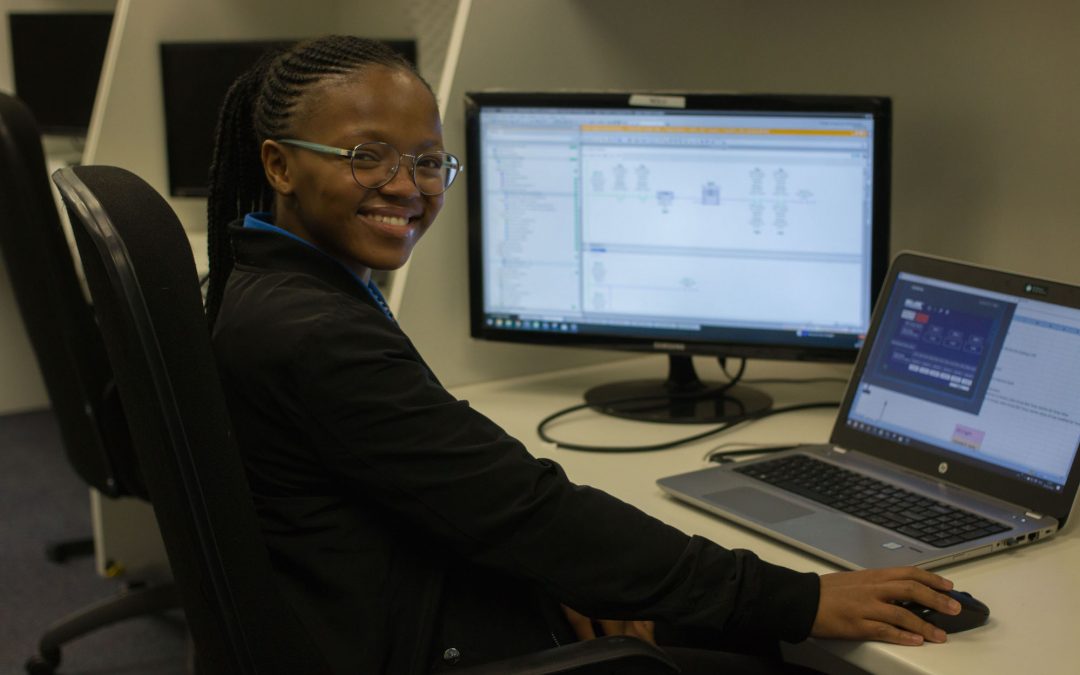
by Good News Lab | Jan 14, 2020 | Industry 4.0, Jendamark Junction, Jendamark News
Jendamark supports the Incubating Great Engineering Minds (iGEMS) programme, which is fostering a new generation of engineers ready to meet the demands of a tech-driven world.
Run under the auspices of the Unity in Africa Foundation, iGEMS is an education-to-employment initiative that aims to develop employable, passionate and skilled engineers, and also place work-ready graduates into the marketplace.
With artificial intelligence and robotics already prevalent in industry, the foundation believes the fourth industrial revolution (4IR) will require a niche set of graduates who are familiar with the demands of the world of work.
According to Jendamark’s apprentice co-ordinator Allan Bellairs, the company has been involved with iGEMS since 2016 and sees great value in the multi-layered approach to youth development and creating a talent pipeline.
“For us it’s about both skills development and socioeconomic development. It helps to fulfil our commitment to community engagement, while also assisting in the development of work-ready professional engineering graduates.”
The programme introduces the youth in Jendamark’s hometown of Nelson Mandela Bay to the technological revolution through annual coding and programming workshops. Weekly maths, science and leadership development sessions round out the supportive, holistic approach to education.
Aside from financial support for iGEMS, Jendamark also acts as a host company, facilitating site visits for participants, and absorbing one or two learners annually for a year of experiential learning and mentorship. This acts as a working “gap year” for learners who have successfully completed
Grade 12 before embarking on their tertiary studies.
“The student becomes a full-time employee at Jendamark for one year, experiencing the world of work, especially in relation to an engineering career such as electronics or robotics,” says Bellairs.
He says the year of work assists in making the transition to university easier as it links practical and theoretical knowledge, and creates a working relationship between student and industry.
“It really allows students the opportunity to change their interest in engineering into an absolute passion!”
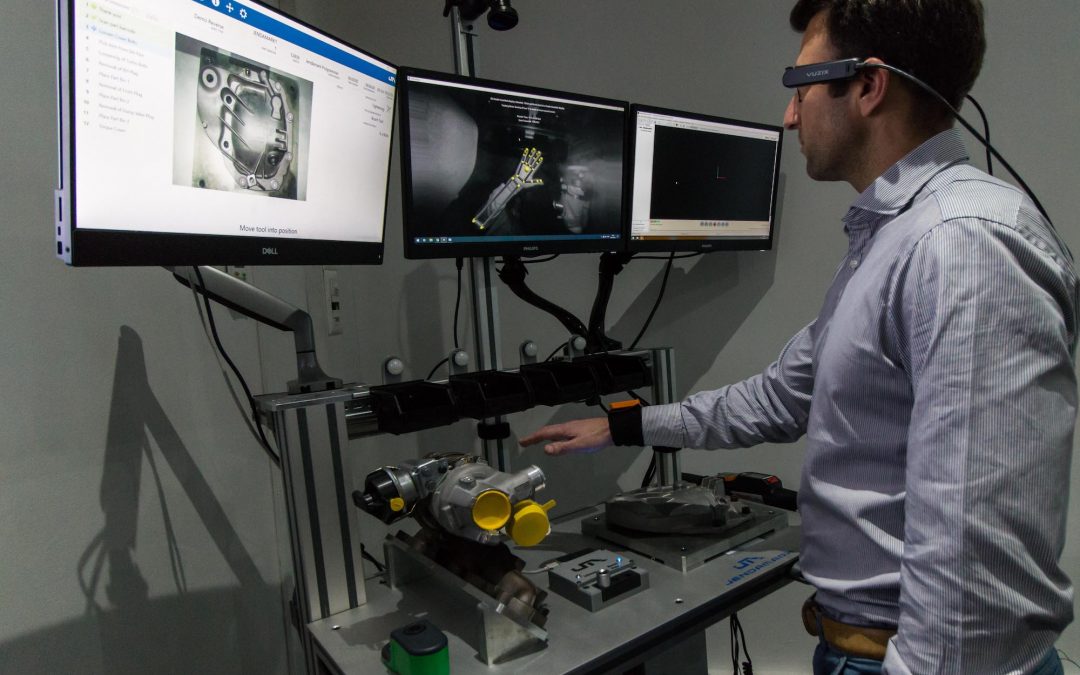
by Good News Lab | Jan 14, 2020 | Industry 4.0, Jendamark Junction, Jendamark News
Jendamark South Africa’s new tech centre is an exciting space for collaborating with customers and forging new paths on the digital transformation journey.
“As the ecosystem of digital products and services grows, we can now showcase the different offerings, as well as our partners’ technologies, while finding new ways of solving some of the toughest challenges on the production line,” says Jendamark’s manager for digital strategy and transformation, Juane Schutte.
“We have defined Industry 4.0 not as a bunch of technologies, but as a new way of collaborating in an ecosystem that works together seamlessly to provide value to our stakeholders and customers,” says Schutte.
Some of the technologies that customers can look forward to experiencing first-hand include the:
- Odin data platform – WorkStation (operator guidance system), LineWatch (real-time production dashboard) and mobile apps (end-of-line quality inspection).
- Integrated hardware – Odin smart watch, wireless bolting tools, augmented reality glasses, infrared sensors for hand and tool tracking, scanners and cameras.
- Virtual reality
– production line simulation to ensure design optimisation;
– operator training using digital worker guidance;
– development and simulation by gaming developers.
- 3D printing – printing parts for testing, new part development and prototyping.
Schutte says the tech centre also includes a giant screen for demonstrating the various capabilities to visiting groups and customers.
“It is exciting to be able to show the many practical applications for digital technologies throughout an organisation. We can help customers to improve efficiencies for operators, HR personnel, production
managers, process engineers, data scientists and more.”
So far, Jendamark has hosted visitors from all strata, including students, CEOs and government officials.
“Everyone who enters the room gains a practical understanding of how Industry 4.0 is impacting manufacturing and the future of work,” explains Schutte.
“The feedback has been phenomenal. We think this is because real collaboration has been missing between businesses and stakeholders. We find that, after visiting our tech centre, our potential customers want to bring their own children to learn and open their eyes to the ways in which the future of work will be impacted.
“We look forward to not only showcasing our tech, but also enabling eager learners to get involved and build new solutions together. Technology should not be a stumbling block but rather a great enabler for future growth.”
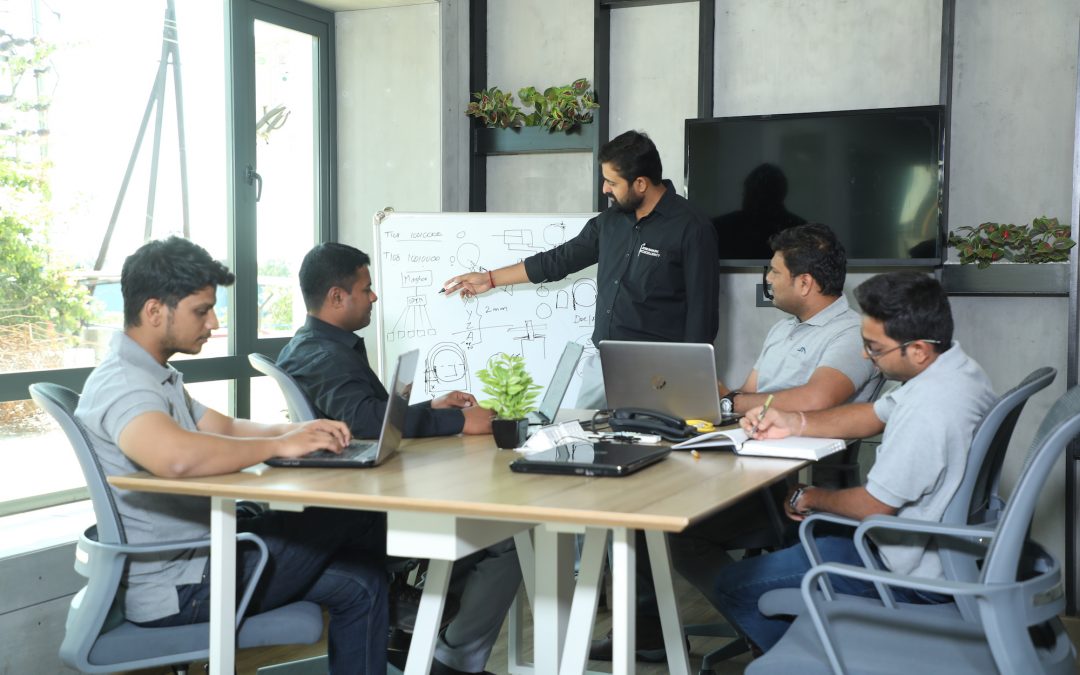
by Good News Lab | Jan 14, 2020 | Industry 4.0, Jendamark Junction, Jendamark News
Making the move from machine builder to technology company has been a natural progression for the newly rebranded Jendamark India – and one that will have huge implications for its global customers.
That’s the message from Himanshu Jadhav, who has taken the helm as chief executive offi cer and director of the new-look entity, previously known as Jendamark Techcellency.
By aligning more closely with Jendamark’s international head office in South Africa, Jadhav says, Jendamark India will be able to bring the latest solutions and technological advancements to its Asian customers.
“We are looking to move towards value creation for our customers by bringing new systems, new innovations and something new which does not exist in the current market.
“Previously, India was focused only on manufacturing. With access to this broader global offering, operating with the same vision and focus as Jendamark SA just makes much more sense.
“With this restructuring, we have re-aligned our business to focus more on automation and Industry 4.0-driven digital technology.”
Jadhav makes it clear that the Pune and Port Elizabeth plants will continue to operate in a unified manner, combining their strengths to deliver turnkey assembly facilities, but that Jendamark India’s particular understanding of the local manufacturing sector will allow it to make a unique contribution on the subcontinent.
“We will introduce our special blend and way of doing things, and gradually take more responsibility in shared customer projects. There is a lot to share and learn between the companies,” he says.
As far as the implications for customers are concerned, Jadhav says he believes they will be the biggest
beneficiaries of this positive development.
“There will be investments made in the near future in specific areas for technological advancements.
Knowledge transfer will be smoother, with our research and development team working on specific solutions needed by Indian customers,” he says.
Jendamark Automation’s operations director Siegfried Lokotsch remains in his role as chairman of the board of Jendamark India.
“The Jendamark name has always represented the highest standards in automation technology and service to the global automotive industry. We are proud of the tremendous strides Jendamark India has made since the start of our association five years ago and we are excited to continue growing in service of the booming Indian manufacturing sector,” adds Lokotsch.
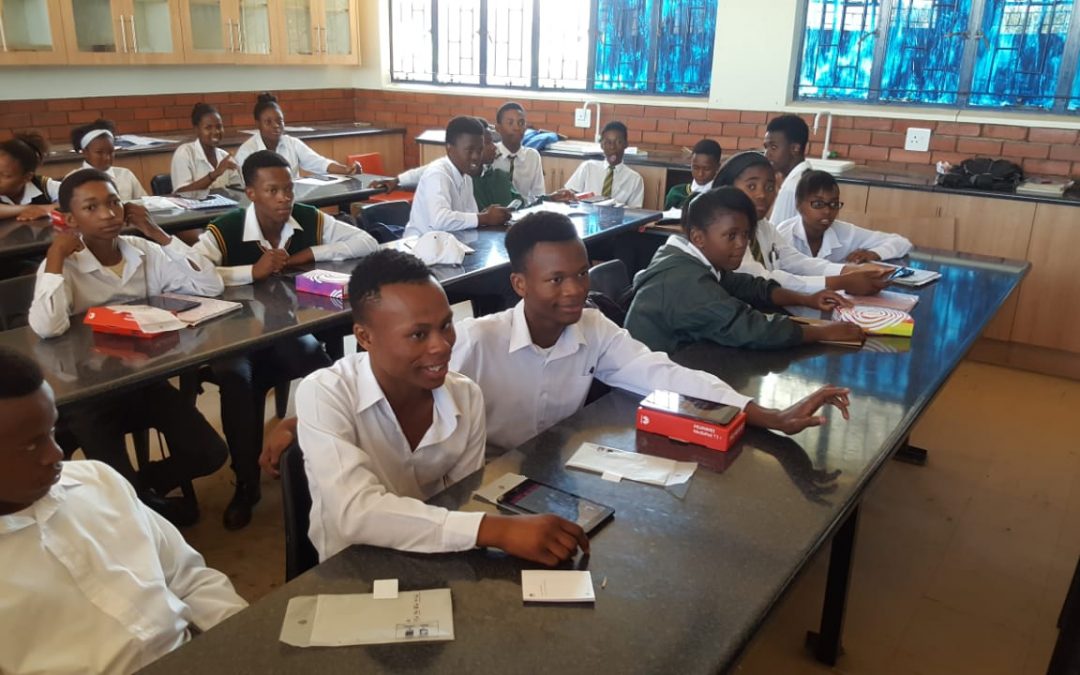
by Good News Lab | Jun 7, 2019 | Industry 4.0, Jendamark Junction
Thinking about the future – and the possibilities that technology can unlock – is integral to Jendamark’s business success. Which is why the Group has invested in innovative start-up Closed-Loop Learner Network (CLN).
While the Fourth Industrial Revolution holds the promise of rapid economic development for Africa, it cannot succeed when millions of children have no access to a decent education or online resources. This is the problem that CLN sets out to solve with its Omang digital device.
Meaning “identity” in Setswana, Omang aims to give under-privileged youngsters a digital identity. It is a tablet that is sponsored by various corporate partners and pre-loaded with connectivity, CAPS curriculum-approved textbooks, white-listed online resources, tutorials and exam papers for Grades 10 to 12 learners.
Omang has been piloted among a thousand children in no-fee schools in the Free State and, with the endorsement of the provincial education department, that number is expected to grow to 20,000 by the end of the 2019 academic year.
CLN’s stated ambition is to place a fully resourced tablet in the hands of one million of the poorest pupils within the next five years.
“There are at least eight million children in under-resourced schools who have no teacher to inspire them, no access to a bigger world, no hope that there is something for them beyond mere survival,” says Jendamark sales and design director Yanesh Naidoo.
“That’s the reason we first started looking into Omang, as a way to open up their worlds and their minds.”
South Africa currently ranks a paltry 54 out of 63 global economies in the category of education and training, according to the latest IMD World Digital Competitiveness Rankings.
Naidoo says Jendamark converged with the technology-driven CLN on a number of fronts, ultimately leading to a 41% stake in the social entrepreneurial start-up.
“We are excited about this long-term partnership and we’re bringing our Odin software platform into the mix, which will provide the API for third-party app development.”
Such apps, he explains, could be used to teach additional life skills, such as financial literacy, while creating branding and interaction opportunities for corporate sponsors.
CLN founder Ajit Gopalakrishnan says the goal is to become “the Facebook of education” and to collect data to gain in-depth insight into the next generation in order to equip them for the future.
“It’s about seeing the human potential – and the business opportunity – in including the masses in the economic equation,” he says.
For Jendamark managing director Quinton Uren, however, the mission is a lot more personal. As a historically disadvantaged person, he says he knows how important it is to give children the tools to explore and dream and to see beyond their limiting reality.
“What we’ve been searching for at Jendamark is how to give back effectively. When Ajit presented this programme, I just knew: this rang true. We can digitise and give millions of children hope. This can be a real game-changer.”
Uren says the aim is not to repair South Africa’s underperforming education system, but to leapfrog it.
“Industry 4.0 is the perfect platform to achieve this. With this paperless tablet device, we can really change lives and the future of our country.”
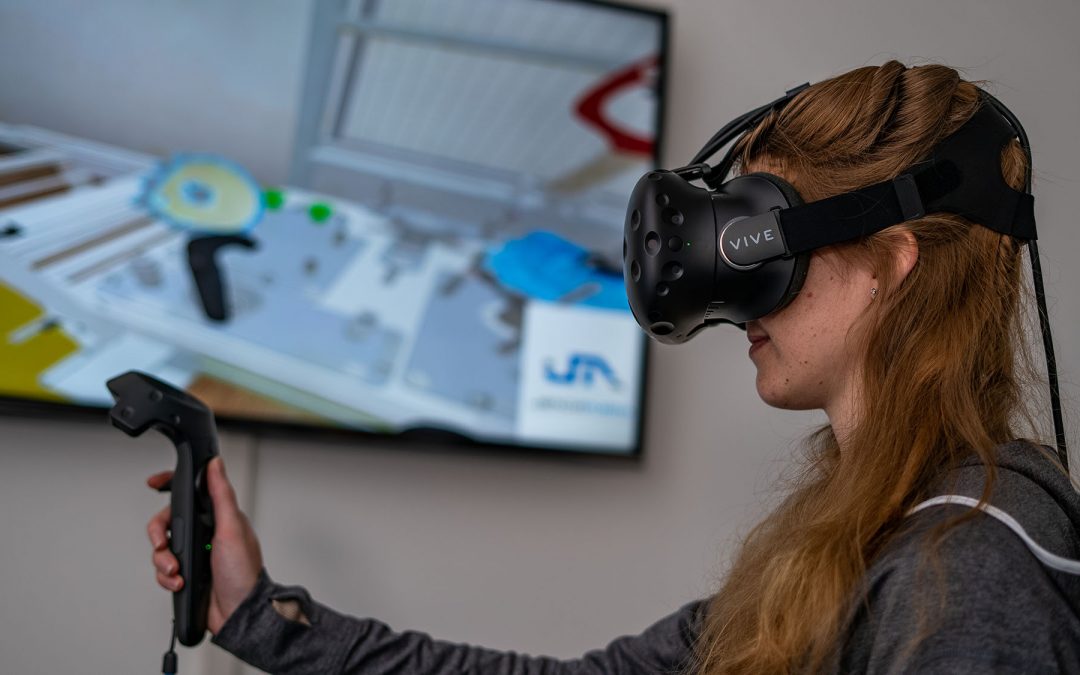
by Good News Lab | Nov 14, 2018 | Industry 4.0, Jendamark Junction
Jendamark’s virtual reality room allows designers and customers to explore the possibilities of a new production line in three-dimensional reality via an interactive, computergenerated experience.
The introduction of virtual reality (VR) has had tangible, real world benefits for Jendamark customers by enhancing the design review process.
First, the design team makes the complete production line in VR and a member dons the glasses for a walkthrough of the line. This simple step often highlights potential flaws that would not be apparent during a normal design review.
“It’s about seeing the design with fresh eyes,” says Yanesh Naidoo.
“For example, from a maintenance perspective, can the motor be easily replaced or is it stuck underneath in an unreachable back corner? And, as the operator, can one easily reach all the components, and does it really take the time predicted?”
Naidoo says VR is ideal for ironing out any kinks before the design is handed over to manufacturing and for clients to get a better understanding of its workings before sign-off.
“While the line is in production, VR could also be used to train teams of operators on the virtual version, so that they are ready to hit the ground running when commissioning is complete.”






